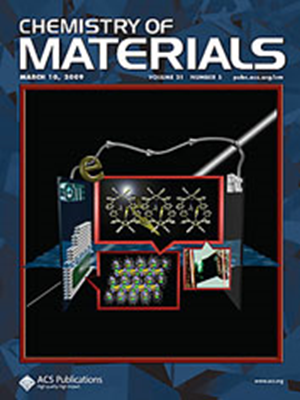沸石模板炭骨架结构对其热结构转化的影响
IF 7
2区 材料科学
Q2 CHEMISTRY, PHYSICAL
引用次数: 0
摘要
沸石模板碳(ztc)是用碳复制沸石的微孔结构合成的有序微孔碳。由于碳在沸石微孔的密闭空间内生长,ztc由相互连接的巴克碗状碳组成,具有丰富的边缘位点,末端是氢原子(H)。ztc的h端边缘位的数量和局部骨架结构取决于它们的合成条件。在本研究中,我们研究了ztc的初始框架结构对其热结构转变的影响。我们的研究结果表明,主要由含有丰富的h端边缘位的纳米带状碳块构建的ZTC框架在热处理时发生了显著的脱氢(去除H2)并伴随形成新的C-C键,导致碳表面曲率增加,微孔直径和体积减小,超微孔隙度增强。这些结构变化也导致宏观性质的实质性改变,如氧化稳定性、功函数和ppb级氯仿在水中的吸附能力。这一发现凸显了通过ztc的合成后热转化合成具有定制结构和物理化学性质的微孔碳的独特潜力。本文章由计算机程序翻译,如有差异,请以英文原文为准。

Effects of Framework Structures of Zeolite-Templated Carbons on Their Thermal Structural Transformations
Zeolite-templated carbons (ZTCs) are ordered microporous carbons synthesized by replicating the microporous structure of zeolites with carbon. Due to carbon growth within the confined spaces of zeolite micropores, ZTCs are composed of interconnected, buckybowl-like carbon moieties with abundant edge sites terminated by hydrogen (H) atoms. The amount of H-terminated edge sites and the local framework structure of ZTCs depend on their synthesis conditions. In this study, we investigated the effects of the initial framework structures of ZTCs on their thermal structural transformations. Our results demonstrate that ZTC frameworks primarily built with nanoribbon-like carbon moieties containing abundant H-terminated edge sites undergo significant dehydrogenation (removal of H2) and concomitant formation of new C–C bonds upon thermal treatment, leading to increased carbon surface curvature, reduced micropore diameter and volume, and enhanced ultramicroporosity. These structural changes also lead to substantial modifications in macroscopic properties, such as oxidative stability, work function, and ppb-level chloroform adsorption capability in water. The findings highlight the unique potential of synthesizing microporous carbons with tailored structures and physicochemical properties through post-synthesis thermal transformation of ZTCs.
求助全文
通过发布文献求助,成功后即可免费获取论文全文。
去求助
来源期刊

Chemistry of Materials
工程技术-材料科学:综合
CiteScore
14.10
自引率
5.80%
发文量
929
审稿时长
1.5 months
期刊介绍:
The journal Chemistry of Materials focuses on publishing original research at the intersection of materials science and chemistry. The studies published in the journal involve chemistry as a prominent component and explore topics such as the design, synthesis, characterization, processing, understanding, and application of functional or potentially functional materials. The journal covers various areas of interest, including inorganic and organic solid-state chemistry, nanomaterials, biomaterials, thin films and polymers, and composite/hybrid materials. The journal particularly seeks papers that highlight the creation or development of innovative materials with novel optical, electrical, magnetic, catalytic, or mechanical properties. It is essential that manuscripts on these topics have a primary focus on the chemistry of materials and represent a significant advancement compared to prior research. Before external reviews are sought, submitted manuscripts undergo a review process by a minimum of two editors to ensure their appropriateness for the journal and the presence of sufficient evidence of a significant advance that will be of broad interest to the materials chemistry community.
 求助内容:
求助内容: 应助结果提醒方式:
应助结果提醒方式:


